Duck tumor necrosis factor alpha (TNF-α) Elisa kit instructions This kit is for research use only.
Detection range: 96T
20ng / L-480ng / L
purpose of usage:
This kit is used to determine the content of tumor necrosis factor alpha (TNF-α) in duck serum, plasma and related liquid samples.
Experimental principle Duck tumor necrosis factor alpha (TNF-α) Elisa kit instructions This kit uses the double antibody sandwich method to determine the level of duck tumor necrosis factor alpha (TNF-α) in the specimen. Microporous plates were coated with purified duck tumor necrosis factor alpha (TNF-α) antibody to make solid-phase antibodies. Tumor necrosis factor alpha (TNF-α) was added to the microwells coated with monoclonal antibody in turn, and then labeled with HRP Of tumor necrosis factor alpha (TNF-α) antibody,
The antibody-antigen-enzyme-labeled antibody complex is formed, and after thorough washing, the substrate TMB is added for color development. TMB is converted into blue under the catalysis of HRP enzyme, and into the final yellow under the action of acid. The color depth is positively correlated with the tumor necrosis factor alpha (TNF-α) in the sample. The absorbance (OD value) was measured with a microplate reader at a wavelength of 450 nm, and the concentration of duck tumor necrosis factor α (TNF-α) in the sample was calculated by a standard curve.
Kit composition
1 30 times concentrated washing solution 20ml × 1 bottle 7 stop solution 6ml × 1 bottle
2 Enzyme label reagent 6ml × 1 bottle 8 standard (960ng / L) 0.5ml × 1 bottle
3 Enzyme label coated plate 12 wells × 8 strips 9 standard dilutions 1.5ml × 1 bottle
4 Sample diluent 6ml × 1 bottle 10 instructions 1 copy
5 Developer A solution 6ml × 1 bottle 11 2 sealing film
6 Developer B solution 6ml × 1 / bottle 12 sealed bag 1 specimen requirement
1. Specimens are extracted as soon as possible after collection, and extraction is performed according to relevant literature, and experiments should be conducted as soon as possible after extraction. If the test cannot be performed immediately, the specimen can be stored at -20 ℃, but repeated freezing and thawing should be avoided
2. Samples containing NaN3 cannot be detected because NaN3 inhibits horseradish peroxidase (HRP) activity.
Steps
1. Dilution of standard products: This kit provides one original standard product. The user can perform dilution in a small test tube according to the following chart.
480ng / L No. 5 standard 150μl original standard added 150μl standard dilution
240ng / L No. 4 standard 150μl No. 5 standard added 150μl standard dilution
120ng / L No. 3 standard 150μl No. 4 standard added 150μl standard dilution
60ng / L No. 2 standard 150μl No. 3 standard added 150μl standard dilution
30ng / L No. 1 standard 150μl No. 2 standard added 150μl standard dilution
2. Add sample: set up blank wells separately (the blank control wells do not add samples and enzyme label reagents, the rest of the steps are the same), standard wells,
Sample hole to be tested. Add 50μl of the standard on the enzyme-coated plate accurately, and add 40μl of sample diluent to the sample well.
Then add 10μl of the sample to be tested (the final dilution of the sample is 5 times). Add the sample and add the sample to the bottom of the well of the microplate, try not to touch the wall of the well, shake gently to mix.
3. Incubation: seal the plate with the sealing film and incubate at 37 ° C for 30 minutes.
4. Mixing solution: Dilute 30 times concentrated washing liquid with distilled water 30 times and reserve
5. Washing: Carefully peel off the sealing film, discard the liquid, spin dry, fill each well with the washing liquid, let it stand for 30 seconds, then discard, repeat 5 times and pat dry.
6. Add enzyme: add 50μl of enzyme label reagent to each well, except blank well.
7. Incubation: The operation is the same as 3.
8. Washing: The operation is the same as 5.
9. Color development: add 50μl of developer A to each well, and then add 50μl of developer B, mix gently, and develop color at 37 ℃ in the dark
10 minutes.
10. Termination: Add 50μl of stop solution to each well to stop the reaction (at this time the blue will turn to yellow).
11. Determination: Measure the absorbance (OD value) of each well in sequence with the blank air conditioner at zero and 450nm wavelength. The measurement should be carried out within 15 minutes after adding the stop solution.
Summary of operating procedures:
The calculation takes the concentration of the standard as the abscissa and the OD value as the ordinate, and draws a standard curve on the coordinate paper.
The corresponding concentration of OD value is found from the standard curve; then multiplied by the dilution factor; or the linear regression equation of the standard curve is calculated from the concentration of the standard and the OD value, and the OD value of the sample is substituted into the equation to calculate the sample concentration With a dilution factor,
This is the actual concentration of the sample.
Precautions
1. The kit should be taken out of the refrigerated environment and equilibrated at room temperature for 15-30 minutes before use. If the enzyme-coated plate is unsealed after opening, the strip should be stored in a sealed bag.
2. Crystals may be precipitated in the concentrated washing liquid, which can be heated and dissolved in a water bath during dilution, and the results will not be affected during washing.
3. The sampler should be used at each step of sample addition, and the accuracy should be regularly checked to avoid test errors. It is best to control the sampling time within 5 minutes. If there are many specimens, it is recommended to use a volley gun to add samples.
4. Please make a standard curve at the same time of each measurement, it is best to make a double hole. If the content of the substance to be tested in the specimen is too high (the OD value of the sample is greater than the OD value of the first well of the standard well), please dilute it with a certain multiple (n times) of the sample diluent and then determine it. Please multiply the total dilution for the calculation Multiple (× n × 5).
5. The sealing film is limited to one-time use to avoid cross-contamination.
6. Please keep the substrate away from light.
7. Strictly follow the instructions, and the test results must be determined by the microplate reader.
8. All samples, washing liquids and various wastes should be treated as infectious agents.
9. The components of different batches of this reagent shall not be mixed.
Storage conditions and validity period
1. Kit storage :; 2-8 ℃.
2. Validity: 6 months Duck tumor necrosis factor alpha (TNF-α) Elisa kit instructions
Hello, grid charcoal roast *, in addition to baking, but also to prepare smoke-free special charcoal. In addition to the fire burning charcoal, in the barbecue process to continue to add charcoal to maintain the heat. Although this method can sometimes be "angry" and may even make people angry at other times, it is closer to nature and the food cooked by charcoal at high temperature will have a special fragrance. Charcoal grilling definitely tastes better than electric grilling, and it feels different. Electric grilling is just not that strong. However, there are many things to prepare for charcoal barbecue, and it is easy to get dirty. If you don't care about these, it is also very good to get a charcoal barbecue. If it is used at home, of course, the electric barbecue is convenient and clean. But if you want taste and fun, or charcoal is better.
| Name |
Camping Stainless Steel Grill |
| Material | Stainless steel |
| Size | 350*350*120mm |
| Packing | Pallet/carton/wooden box packing |
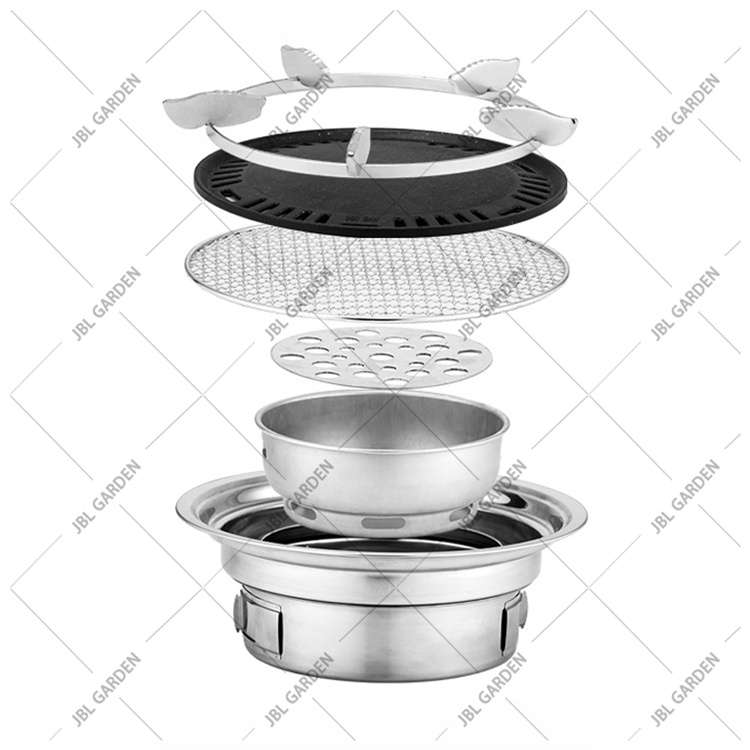
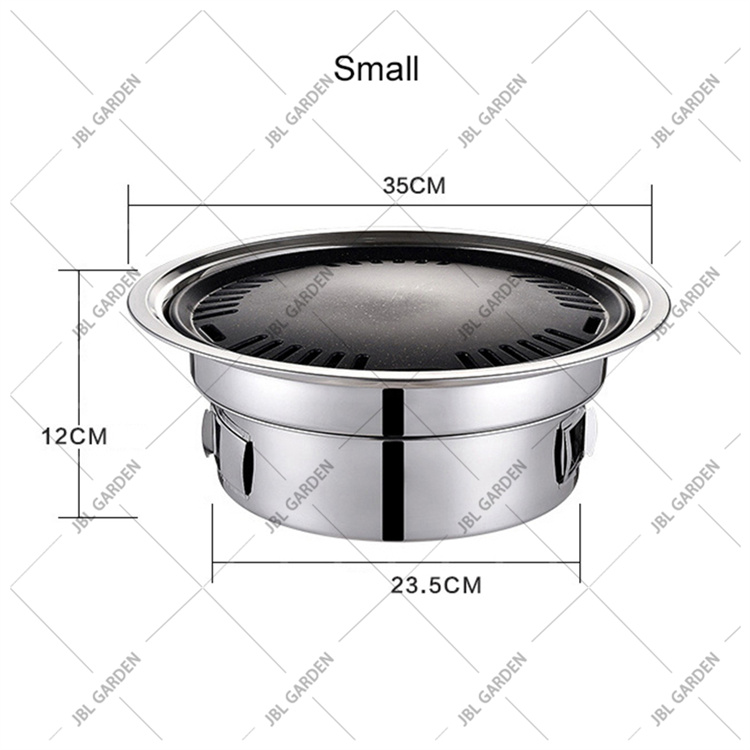
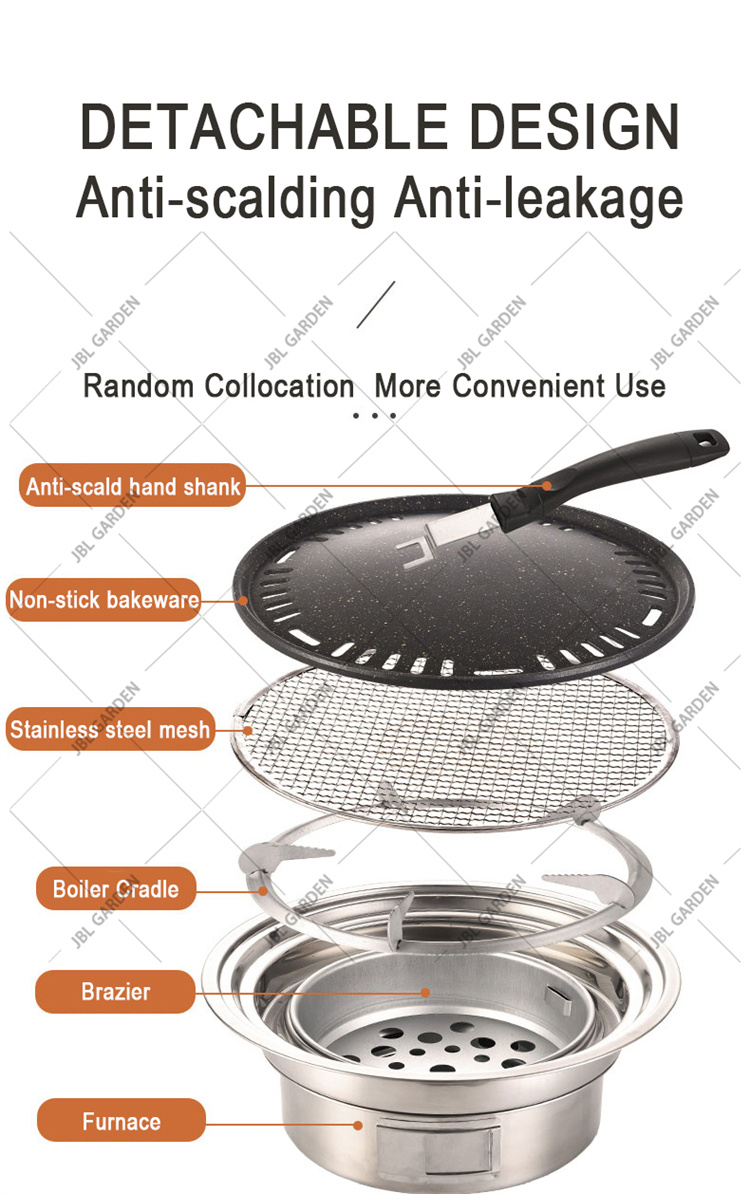
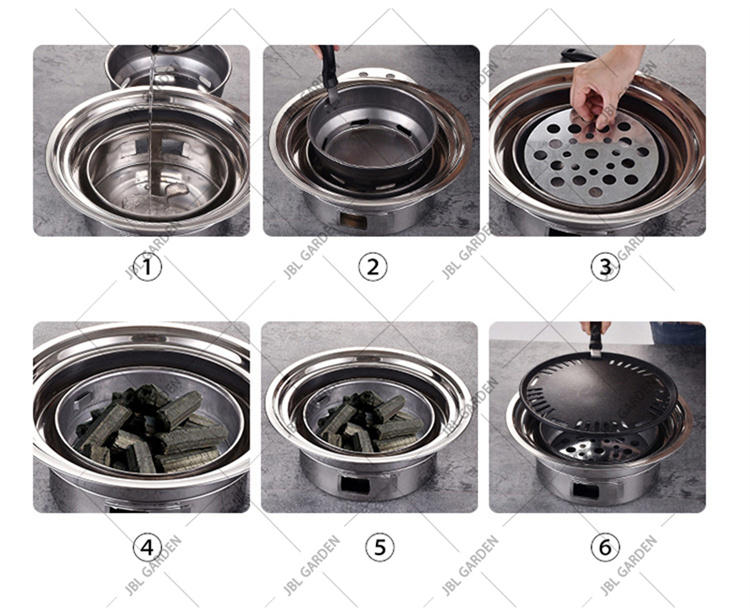
Packing
Packing will by carton.
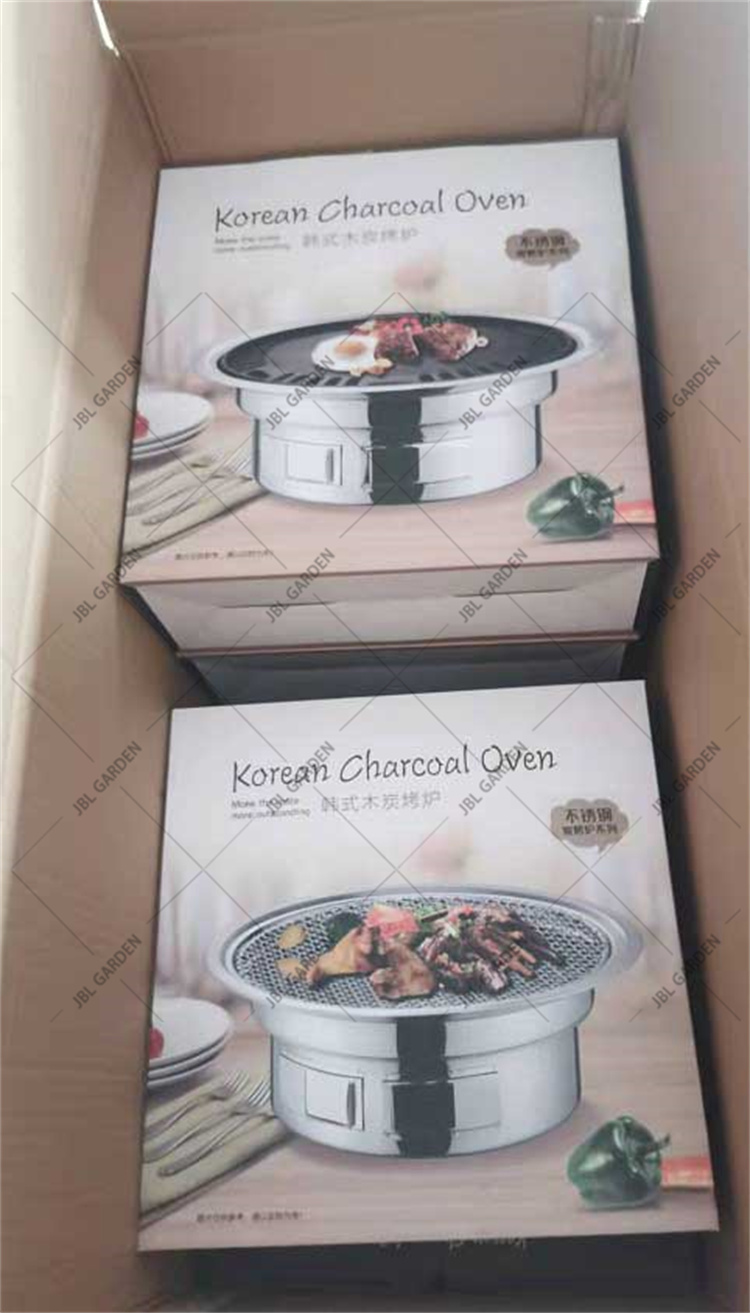
Stainless Steel Bbq Grill,Steel Grill,Stainless Steel Grill,Stainless Steel Bbq
Henan Jinbailai Industrial Co.,Ltd , https://www.hnjblgrill.com